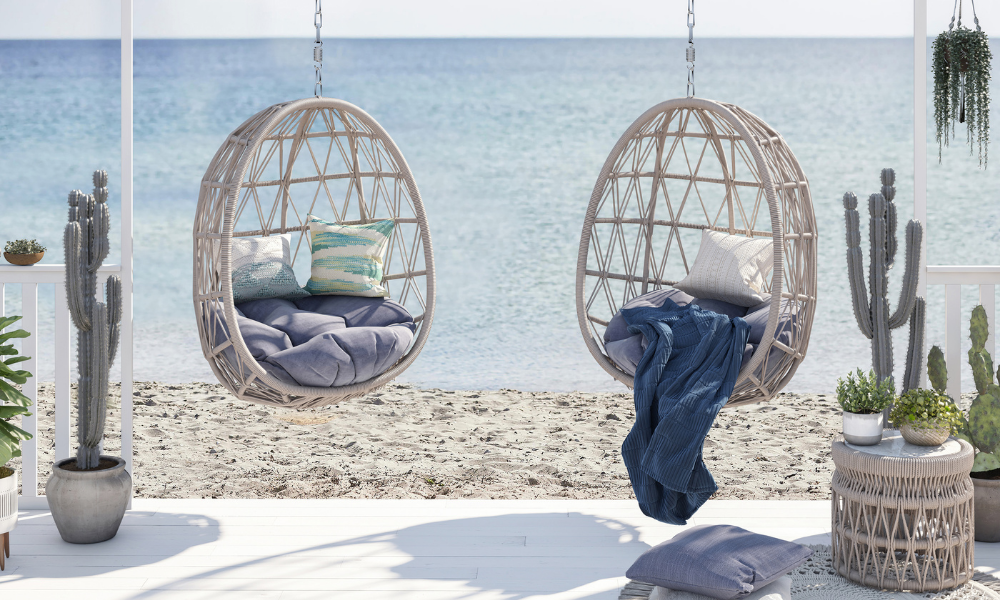Many casual retailers are angry about Brown Jordan Inc.’s recent announcement of additional price hikes, but this is just the latest home furnishings manufacturer to increase prices amid ongoing supply chain issues.
Just a few weeks ago Ashley informed retailers of more price increases and surcharges coming to help cover its own costs on everything from ocean freight to labor to raw materials and components.
Last year, Sunbrella also raised prices “approximately 8.75%, effective on all shipments after January 14, 2022,” according to an email obtained by Casual News Now.
It continues: “Throughout the year our costs for raw materials, energy, labor, and transportation have continued to increase and have been running well above our projections from earlier in the year. We expected some moderation in cost from the spring, but the ongoing supply chain constraints have continued to drive costs upward, despite our team’s committed efforts to offset and mitigate increases. Glen Raven continues to invest and find ways to reduce costs. We have improved our productivity with new more efficient equipment, reduced our energy consumption, water consumption and chemical usage, all while improving product quality and maintaining our superior performance attributes.”
Sherwin Williams also raised prices 15% for 2022 orders because packaging costs increased 54% and chemicals increased 29%. In an email to customers, they said that “unlike previous price increases, which only involved a few contributing increase drivers, this situation is different because it’s across all packaging and chemicals.”
Mamagreen—while a much different company than Brown Jordan or Sunbrella—also recently added an 18% surcharge due to in-house orders, but they recalled it soon after because of customer concerns. The same thing happened last year with RH Peterson when they called off price increases last year because of customer dissatisfaction.
The list goes on and on. This is something that’s happening in nearly every category across all sectors of the industry.
“This is a classic situation where a bad decision may give you a short-term gain but with long-term consequences, and it’s really important that this kind of stuff gets acknowledged,” says Chad Scheinerman, co-owner of Today’s Patio. “There’s a lot of uproar going on over right now because people placed orders—they planned their seasons accordingly and have sold a good amount against what they thought they were buying—and then for the rug to get pulled out underneath them. It’s unacceptable.”
Kris Yates, chief commercial officer at Brown Jordan, told Casual News Now that Brown Jordan Inc. made the decision to increase the price on dealer stock orders after absorbing unprecedented cost increases of 36% over the last twelve months.
“The cost of goods is up in all areas with the largest drivers being aluminum, fabric, labor, and fuel,” Yates says. “Throughout 2021 we supported our customers and partners with price protection on in-house orders and absorbed the increases. We did not limit the amount of stock that could be purchased. We know the dealers need to hold stock to meet the increased market demand. Most of those orders were price-protected.”
She adds that, historically, shorter lead times have allowed Brown Jordan to pass on increased supplier costs in real-time.
“In the current manufacturing environment, supply chain constraints have caused extended lead times which, in turn, delay our ability to pass on increases for six to seven months,” she says. “We are sensitive to the frustration in the dealer community and held off taking this action until costs continued to escalate in the first quarter and supply chain remained highly disrupted. We are taking this action on less than 20% of the retail orders received. We expect the dealers will realize new prices more quickly than the manufacturer is able to.”
ABSCO Owner Cathy Buzbee, whose floor has a “large assortment” of Brown Jordan Inc. brand furniture, says she feels that if one manufacturer can do this there’s nothing to stop others from doing it, too—which has already happened.
“I certainly understand pricing freezes, because we’ve been dealing with them almost weekly for the past year,” she says. “Every day, you open your email, and there’s another price increase from somebody. But the reason that this one is different is that it’s retroactive to our early buys that we placed in September and October of this of last year.”
David Schweig, president of Sunnyland Outdoor, says orders were placed in good faith back in September or October, and because Brown Jordan can’t ship it he feels like he’s being penalized on the shipments.
“I’ve already sold against the products I bought,” Schweig says. “But because they can’t ship in a timely manner, I’m selling SSPO and I can’t go back to my customers and ask for more money.”
Buzbee says she feels that because Brown Jordan is owned by a private firm, it doesn’t really care about retailers.
However, Yates points out that Brown Jordan has been supported by private equity for 30 years and says “they leave the management of the business to the executive leadership team. It is not true that the PE firm makes these decisions.”
Brown Jordan Inc. owns six brands: Brown Jordan, Tropitone, Winston, Castelle, Charter and Texacraft, and it was acquired in 2017 by private investment firm Littlejohn & Co.
Ultimately, retailers are concerned about the relationship aspect of the industry, which has changed dramatically over the past 10 years outdoor companies have been acquired. And this isn’t a Brown Jordan issue, it’s something that retailers feel is happening all over the industry.
“It’s been shifting this way for the past year and a half to two years,” Scheinerman says “But they’re really pushing forward now with these changes.”
This all leads back to a bigger question: How do we get through this while allowing industry to grow and deal with a disrupted supply chain. How do we keep from destroying relationships up and down the supply chain when everyone is struggling?
What do you think?








